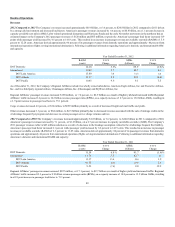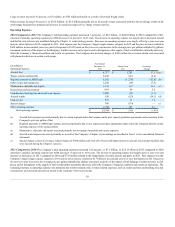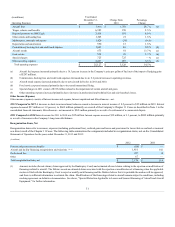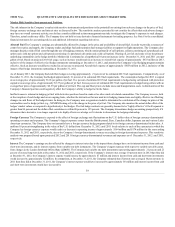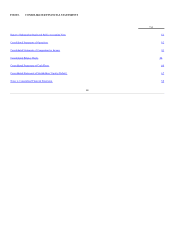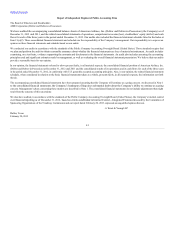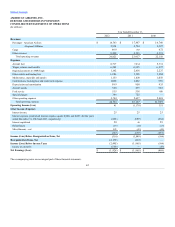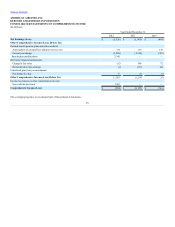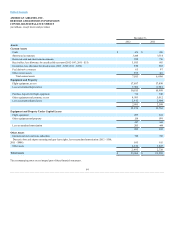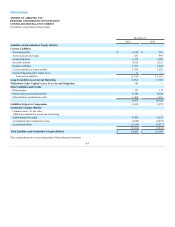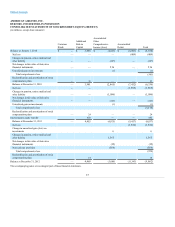American Airlines 2012 Annual Report Download - page 57
Download and view the complete annual report
Please find page 57 of the 2012 American Airlines annual report below. You can navigate through the pages in the report by either clicking on the pages listed below, or by using the keyword search tool below to find specific information within the annual report.
Table of Contents
income (OCI) at December 31, 2012 and will be recognized in future periods as contracts settle. See Note 8 to the consolidated financial statements for
additional information.
New Accounting Pronouncements
See Note 2 to the consolidated financial statements for information regarding new accounting pronouncements.
Glossary of Defined Terms
ASM—Available Seat Mile. A measure of capacity. ASMs equal the total number of seats available for transporting passengers during a reporting period
multiplied by the total number of miles flown during that period.
CASM—(Operating) Cost per Available Seat Mile. The amount of operating cost incurred per ASM during a reporting period, also referred to as “unit cost.”
Passenger Load Factor—A measure of utilized available seating capacity calculated by dividing RPMs by ASMs for a reporting period.
Passenger Mile Yield or Yield—The amount of passenger revenue earned per RPM during a reporting period.
RASM— Passenger Revenue per ASM. The amount of passenger revenue earned per ASM during a reporting period. Passenger RASM is also referred to as
“unit revenue.”
RPM—Revenue Passenger Mile. One revenue-paying passenger transported one mile. RPMs equal the number of revenue passengers during a reporting period
multiplied by the number of miles flown by those passengers during that period. RPMs are also referred to as “traffic.”
57




